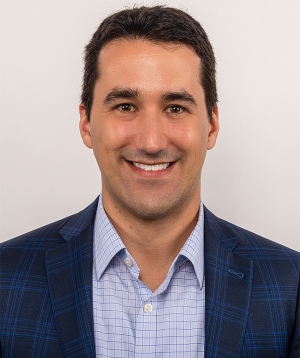Clinical Corner
QCan lasers be used for the prevention of non-melanoma skin cancer?
It is estimated that 9,500 people are diagnosed with non-melanoma skin cancer (NMSC) in the US every day, and more than 3 million Americans are affected annually.1 There is significant patient morbidity and cost associated with NMSC, necessitating expansion in the methods of prevention.2
Lasers are often used in dermatology for cosmetic purposes, such as photoaging, scarring, and dyspigmentation. However, there is a growing body of evidence demonstrating their ability to prevent NMSC. Early clinical studies demonstrated that fully ablative CO2 and Er:YAG laser therapy eliminated the vast majority of actinic keratoses (AKs), as well as delayed the formation of new AKs and NMSC; these treatments were associated with significant downtime and risks.3
With the advent of fractional laser technology in 2004, the side effects associated with non-fractional ablative laser therapy were drastically reduced, while yielding comparable cosmetic results.4 Similarly, recent studies assessing fractional lasers for reduction in AK burden/prevention and NMSC prevention have yielded comparable results to their non-fractional predecessors.5 Both fractional ablative and non-ablative lasers have shown efficacy in this regard. Furthermore, molecular testing has helped elucidate mechanisms of NMSC prevention via the elimination of photodamaged keratinocytes and stimulation of insulin-like growth factor 1 production in fibroblasts.5
While the evidence for lasers to prevent NMSC is promising, there is currently a lack of consensus on the ideal technology and protocol for optimal results. Laser therapy also has a significantly higher cost compared to other types of field therapy for the treatment of AK/NMSC prevention.6 Nevertheless, this evidence has the potential to broaden the utilization of cosmetic laser therapy by highlighting its additional medical benefits.
References:
- Rogers, H. W., Weinstock, M. A., Feldman, S. R., & Coldiron, B. M. (2015). Incidence estimate of nonmelanoma skin cancer (keratinocyte carcinomas) in the US population, 2012. JAMA dermatology, 151(10), 1081-1086.
- Kornek, T., & Augustin, M. (2013). Skin cancer prevention. JDDG: Journal der Deutschen Dermatologischen Gesellschaft, 11(4), 283-298.
- Iyer, S., Friedli, A., Bowes, L., Kricorian, G., & Fitzpatrick, R. E. (2004). Full face laser resurfacing: therapy and prophylaxis for actinic keratoses and non‐melanoma skin cancer. Lasers in surgery and medicine, 34(2), 114-119.
- Halbina, A., Trznadel-Grodzka, E., & Rotsztejn, H. (2014). Fractional laser therapy–the next step in alleviating the symptoms of skin aging (own observations). Menopause Review/Przegląd Menopauzalny, 13(2), 132-135.
- McCormick, E. T., Desai, S., Nelson, K., & Friedman, A. (2023). Fractional Laser for Prevention of Non-melanoma Skin Cancer. Journal of drugs in dermatology: JDD, 22(9), 953-954.Iyer, S., Friedli, A., Bowes, L., Kricorian, G., & Fitzpatrick, R. E. (2004). Full face laser resurfacing: therapy and prophylaxis for actinic keratoses and non‐melanoma skin cancer. Lasers in surgery and medicine, 34(2), 114-119.
- Lampley III, N., Rigo, R., Schlesinger, T., & Rossi, A. M. (2023). Field Therapy for Actinic Keratosis: A Structured Review of the Literature on Efficacy, Cost, and Adherence. Dermatologic Surgery, 49(2), 124-129.


